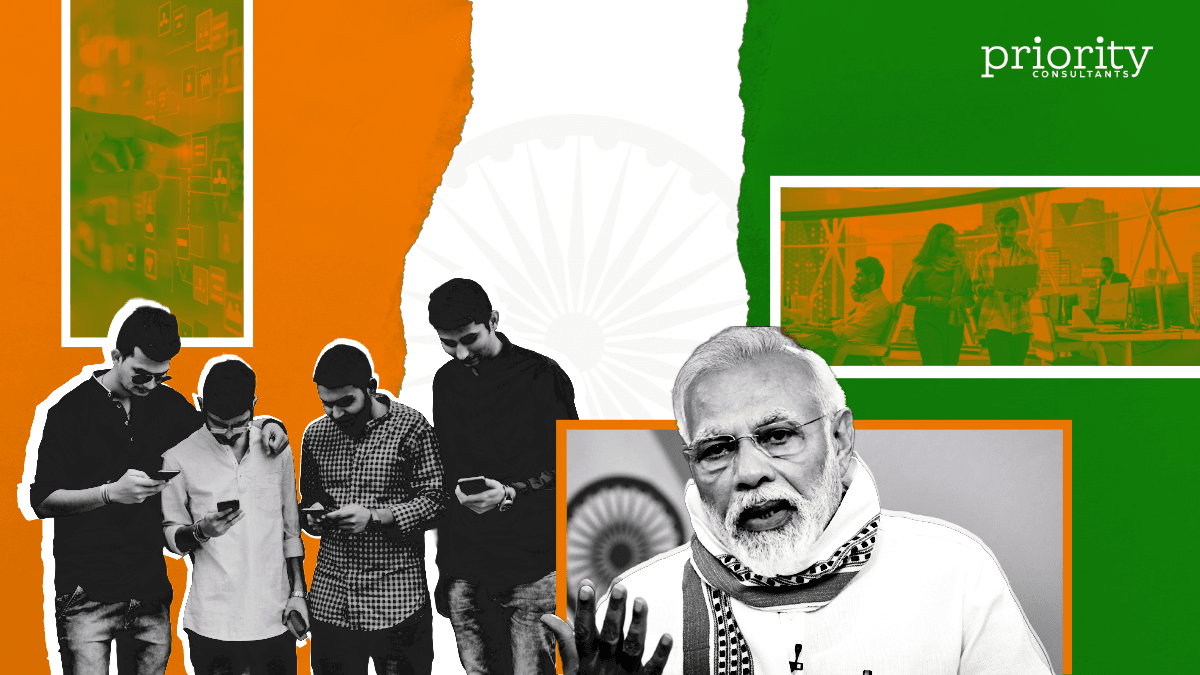 India: A Rising Digital and Media Powerhouse
India: A Rising Digital and Media Powerhouse
India is rapidly ascending as a global economic and digital giant. Fuelled by massive internet adoption, a young and increasingly tech-savvy population, and bold government reforms, the country is reshaping global technology and business flows.
According to Google, Temasek & Bain, India’s internet economy is projected to grow from USD 175 billion in 2022 to nearly USD 1 trillion by 2030. Meanwhile, the IBEF estimates that number of active internet users have exceeded 900 million, making India the second-largest online population in the world.
India is also the third-largest startup ecosystem globally, with more than 100 unicorns across fintech, e-commerce, healthtech, and edtech. Companies such as Flipkart, Paytm, Ola, BYJU’S, and Zomato reflect both local scale and global ambition.
The UPI-powered fintech revolution is setting international benchmarks for digital payments, while the e-commerce market, which is the eighth largest globally, is projected to be worth $400 billion by 2030, according to Wright Research.
With 65% of Indians under 35, digital adoption is booming. Consumers spend 4–7 hours daily on platforms like WhatsApp, Instagram, YouTube, and homegrown apps such as ShareChat and Moj.
Streaming is also reshaping entertainment, with OTT platforms like Disney+ Hotstar, Netflix, JioCinema, and Amazon Prime thriving, with regional language content driving the next wave of growth.
India is the world’s second-largest media market, where traditional and digital coexist:
India’s press is anchored in powerful regional hubs, each with its own flavour:
This geographic spread ensures vernacular media rivals English press in reach and influence, making India’s media ecosystem one of the world’s most complex but rewarding.
Indian technology professionals are among the most visible leaders in the global diaspora, heading major companies such as Google, Microsoft, and Adobe.
Their networks drive global investments, partnerships, and knowledge back into India.
Domestic multinationals like Infosys and the Tata Group embody dual roles: global service providers and local anchors for innovation and infrastructure.
Infosys operates across nearly 60 countries, while Tata has become a household name abroad with its ownership of Jaguar Land Rover.
For global companies, this translates into multiple opportunities:
The current Trump administration’s tariffs has accelerated India’s push to diversify trade. Companies are:
This outward-looking strategy enhances India’s appeal as both a supply hub and a consumer market.
Beyond being a digital giant, India has become a surprising global heavyweight. The country operates one of the largest satellite constellations in the world through ISRO, launching payloads for both domestic and foreign clients. Meanwhile, Indian conglomerates own marquee global brands like Jaguar Land Rover, which symbolise of how far Indian enterprise have travelled.
For businesses and investors, the takeaway is clear: India is a global force shaping technology, media, and commerce both at home and abroad.
Looking to scale your strategy across India and the region?
At Priority Consultants, we help brands act as trusted strategic partners to customers and stakeholders. Whether it’s driving growth, managing transformation, or shaping policy, our integrated communications strategies are built to deliver measurable impact.
Get in touch to discover how we can help your brand lead with insight and influence.